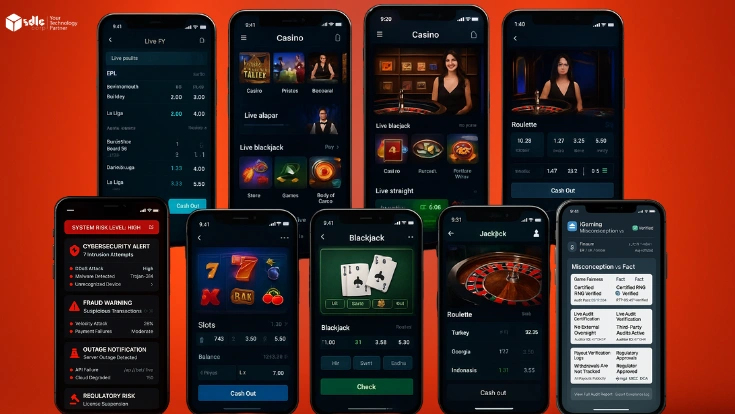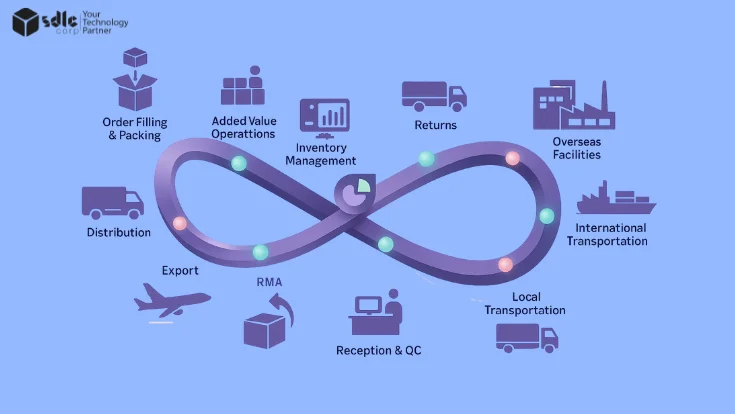Blockchain technology is widely regarded as one of the most revolutionary innovations of the digital age. It has disrupted industries from finance and healthcare to supply chain management and logistics. However, as the number of blockchain networks continues to grow, so do the challenges, particularly when it comes to interoperability. Blockchain interoperability refers to the ability of different blockchain systems to communicate, share data, and work together seamlessly. In other words, interoperability enables various blockchain networks to interact without requiring users or developers to switch between different platforms or ecosystems.
Despite its potential, creating effective interoperability solutions remains one of the most significant hurdles for blockchain developers. This blog delves into the various challenges that blockchain developers face when working on interoperability solutions, and how these challenges can be overcome with innovation and expertise.
Understanding Blockchain Interoperability

Before we dive into the challenges, it’s essential to have a clear understanding of what blockchain interoperability is and why it is so important.
In simple terms, blockchain interoperability refers to the capability of one blockchain network to interact and exchange information with another network. Today, there are hundreds of blockchain networks, each with its own unique consensus mechanisms, token standards, and data structures. These blockchains are often isolated and don’t easily communicate with each other, which limits their potential.
Interoperability becomes especially crucial in a multi-chain ecosystem where different blockchains are used for various purposes—such as smart contracts, decentralized finance (DeFi), supply chain tracking, and more. In a world where blockchain technology is expanding rapidly, interoperability solutions will be necessary to ensure that these networks can work together to provide greater functionality, flexibility, and scalability.
Jump Into Action: In Blockchain Development

Key Challenges Faced by Blockchain Developers in Interoperability Solutions
While interoperability promises to make blockchain technology more efficient, the process of integrating various blockchain systems is not without its challenges. Here are some of the main hurdles that blockchain developers face in solving the interoperability puzzle:
1. Technical Complexity
Blockchain systems can vary drastically in terms of their design, consensus algorithms, and data structures. For instance, Bitcoin uses a proof-of-work (PoW) consensus mechanism, while Ethereum is transitioning to proof-of-stake (PoS). Then there are blockchains like Solana or Polkadot that utilize entirely different consensus mechanisms, which makes it incredibly challenging for developers to create interoperability solutions that work across all these systems.
Moreover, blockchains differ in their architecture—Ethereum uses an account-based model, while Bitcoin uses a UTXO (unspent transaction output) model. The challenge lies in translating data from one system to another while ensuring that the transaction data remains accurate and valid. Blockchain developers need to design solutions that can bridge these fundamental differences, requiring an in-depth understanding of each system’s intricacies.
To overcome this, blockchain development companies specializing in enterprise blockchain development are focusing on creating robust cross-chain communication protocols. These include technologies such as Atomic Swaps, Blockchain Routers, and Sidechains to facilitate transactions between different blockchain networks.
2. Security Risks

Security is one of the top concerns when it comes to interoperability. Blockchain developers need to ensure that any interoperability solution is secure and doesn’t expose vulnerabilities to cyberattacks. Allowing different blockchain networks to interact with each other creates new entry points for potential attacks. Hackers could exploit weak interoperability solutions to access funds, steal data, or disrupt the functioning of multiple blockchain networks.
For example, the introduction of cross-chain bridges, which allow the transfer of tokens between different blockchain networks, opens the door for exploits such as double-spending attacks or smart contract vulnerabilities. In a recent example, the Poly Network, a cross-chain decentralized finance platform, suffered a hack that resulted in the loss of millions of dollars due to vulnerabilities in its interoperability solution.
To address these risks, developers need to ensure that the solutions they build are secure by design. This often involves using robust cryptographic methods, enforcing strict access controls, and regularly auditing interoperability protocols for vulnerabilities. Blockchain developers from a top blockchain development company often employ multiple security measures, such as multi-signature wallets, zero-knowledge proofs, and quantum-resistant algorithms, to protect users’ data and assets when interacting across multiple blockchain platforms.
3. Lack of Standardization
One of the primary reasons for the challenge of interoperability is the lack of standardization across blockchain networks. Different blockchains use different protocols, consensus algorithms, and smart contract standards, which makes it difficult for developers to create interoperability solutions that can work across all these systems.
For instance, the ERC-20 token standard is widely used on Ethereum, but it’s not compatible with Bitcoin or other blockchains. Similarly, different blockchains use different methods for encoding data, which complicates data exchange between systems. Without standardized protocols, developers must either build custom solutions for each platform or work with complex adapters that attempt to translate between systems.
While some projects, such as Polkadot and Cosmos, are attempting to create standard protocols for interoperability, progress has been slow, and widespread adoption of such standards has not yet been achieved. As a result, blockchain developers must often work around these discrepancies, which requires both creativity and technical expertise.
4. Scalability Issues
Scalability is another major concern when it comes to interoperability. As blockchain networks grow in popularity, the volume of transactions between these networks will increase. The systems that developers create must be able to handle this increased load without compromising performance or security.
Blockchain scalability challenges are amplified in interoperability solutions because these solutions often require more computing resources and bandwidth. For example, when assets are transferred between blockchains using a cross-chain protocol, multiple blocks must be created, validated, and processed. As transaction volumes rise, it becomes increasingly difficult to ensure that these systems can handle large-scale interactions without slowdowns or errors.
To address scalability, blockchain developers working with an enterprise blockchain development company focus on using advanced solutions such as layer-2 scaling solutions or sharded blockchains. These technologies can help alleviate some of the strain on the primary blockchain network by offloading processing to secondary layers or parallel chains, which improves both speed and scalability.
Tailored Blockchain Development Services for Your Needs
Tailored solutions for your business needs.

5. Consensus Mechanism Differences
Each blockchain network has its own consensus mechanism, whether it’s proof-of-work, proof-of-stake, or something else entirely. These consensus mechanisms play a crucial role in how transactions are validated and agreed upon. The differences between them present a significant challenge when it comes to interoperability.
For example, proof-of-work blockchains like Bitcoin require a vast amount of computational power to validate transactions, while proof-of-stake blockchains like Ethereum 2.0 are more energy-efficient but use a completely different method to validate transactions. When developers try to design solutions for interoperability between these systems, they must account for these differences in consensus mechanisms.
Blockchain developers need to find ways to bridge these differences, such as using consensus agnostic frameworks or interoperability protocols that can operate independently of the underlying consensus models. However, this requires substantial technical expertise and careful consideration of how different systems function.
6. Regulatory and Legal Challenges
Blockchain interoperability solutions often involve multiple jurisdictions, especially when dealing with cross-border transactions. Different countries have different regulations surrounding blockchain technology, cryptocurrency, and financial transactions. For example, a blockchain platform operating in the U.S. may be subject to specific regulatory requirements that don’t apply to a platform in Europe or Asia.
When developing interoperability solutions, blockchain developers must ensure that the system complies with all relevant legal and regulatory frameworks. Failure to do so could result in legal liabilities, fines, or even the shutdown of the platform in certain regions. This adds another layer of complexity to the already difficult task of developing secure and efficient interoperability solutions.
Blockchain developers working with custom blockchain development companies must stay up to date with local regulations and ensure that their solutions are designed with compliance in mind. In some cases, this may involve working closely with legal teams and regulatory bodies to ensure that the interoperability solution is fully compliant with international laws.
7. Adoption and Ecosystem Integration
Even if developers create a highly secure and scalable interoperability solution, it may still face challenges in terms of adoption. Blockchain interoperability requires participation from multiple blockchain networks, and unless these networks agree to integrate with one another, the solution is essentially ineffective.
For example, in the case of cross-chain platforms, all involved blockchains must support the necessary protocols and standards for interoperability to function. Blockchain projects often have different goals, roadmaps, and communities, which can make it difficult to align their interests.
The solution to this problem lies in collaboration and industry-wide cooperation. Blockchain developers must encourage a culture of collaboration and work together to create solutions that benefit the broader ecosystem. Initiatives like cross-chain bridges, decentralized exchanges (DEXs), and consortium blockchains can help foster cooperation between different blockchain networks and accelerate the adoption of interoperability solutions.
Role of Blockchain Development Companies

Blockchain development companies play a pivotal role in addressing the complexities of interoperability solutions. With their expertise in diverse blockchain technologies, these companies enable seamless communication and data exchange across multiple networks, overcoming technical, security, and scalability challenges.
A custom blockchain development company tailors solutions to specific business needs, ensuring that interoperability aligns with enterprise goals. By leveraging cutting-edge protocols like Polkadot, Cosmos, and Hyperledger, these companies provide frameworks that facilitate cross-chain communication. They also employ decentralized bridges and middleware, ensuring secure and efficient interoperability.
Enterprise blockchain development companies focus on delivering scalable solutions for high-volume transactions while adhering to industry standards for performance and security. Collaborating with a blockchain development company in India or the USA provides businesses with access to global talent, cost-effective services, and innovative approaches.
Hiring expert blockchain developers, whether as remote blockchain developers, nearshore blockchain developers, or offshore blockchain developers, ensures access to specialized skills for tackling complex challenges like standardization and governance discrepancies.
By partnering with the best blockchain development companies, businesses can accelerate innovation, enhance scalability, and unlock new opportunities, positioning themselves for long-term success in a competitive blockchain landscape.
Jump Into Action: Hire a Blockchain Developer
Our team of expert Blockchain developers is on hand to assist you.

Conclusion
Blockchain interoperability is a critical component of the future of blockchain technology. The ability to connect multiple blockchain networks seamlessly will unlock tremendous value for businesses and users alike, enabling more efficient, secure, and scalable ecosystems. However, blockchain developers face significant challenges in creating solutions for interoperability, ranging from technical complexity and security risks to scalability issues and regulatory hurdles.
By leveraging innovation, collaboration, and expertise, developers in blockchain development companies can continue to make progress in overcoming these challenges. Whether you’re working with a top blockchain development company in the USA, a custom blockchain development company in India, or hiring remote blockchain developers, creating interoperability solutions is a daunting but necessary task.
As blockchain technology evolves, so too will the solutions for interoperability. With the right expertise and a collaborative mindset, developers can help pave the way for a more interconnected and efficient blockchain ecosystem.
SDLC CORP Blockchain Development Services Overview
SDLC in Corporate Blockchain Development Services follows a structured process to build secure and scalable blockchain solutions. It starts with Requirement Gathering to understand business needs, followed by System Design to plan blockchain architecture. The Development phase involves creating smart contracts and decentralized applications (dApps). Testing ensures the system’s security and functionality. Once tested, the solution is Deployed to a live environment for operational use. Maintenance ensures the system stays secure and updated. By following SDLC principles, blockchain development services deliver tailored, efficient, and secure blockchain solutions for businesses

















